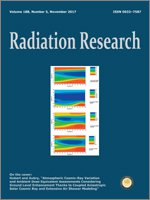This work investigates the impact of Forbush decrease (FD) and ground-level enhancement (GLE) in the atmosphere, based on solar and galactic cosmic-ray models and the extensive air shower simulations. This approach gives the possibility to investigate both the dynamic behavior of neutron monitors (NM) (using response function) and the flight dose. The ambient dose equivalent during quiet solar activity and solar events (i.e., FDs and GLEs) were investigated for realistic flight plans issued from the Eurocontrol Demand Data Repository. The calculated ambient dose equivalents were compared with flight measurements in quiet solar conditions; comparisons are relevant and demonstrate the ability to estimate the dose level. The GLE model was validated for the GLEs 5 and 69 using the cosmic-ray variation recorded by NMs. The GLE model was applied to flight dose calculations. All of these results show that dose values vary drastically with the route path (latitude, longitude and altitude) and with the delay between the flight departure and the solar event occurrence. Doses induced by extreme GLE events were investigated specifically for London to New York flights, and resulting additional doses are a few hundred or 1,000 μSv, impacting significantly the annual effective dose. This highlights the importance of monitoring extreme solar events and using realistic semi-empirical and particle transport methods for reliable calculation of dose levels.
How to translate text using browser tools
25 August 2017
Atmospheric Cosmic-Ray Variation and Ambient Dose Equivalent Assessments Considering Ground Level Enhancement Thanks to Coupled Anisotropic Solar Cosmic Ray and Extensive Air Shower Modeling
Guillaume Hubert,
Sébastien Aubry
ACCESS THE FULL ARTICLE

Radiation Research
Vol. 188 • No. 5
November 2017
Vol. 188 • No. 5
November 2017




